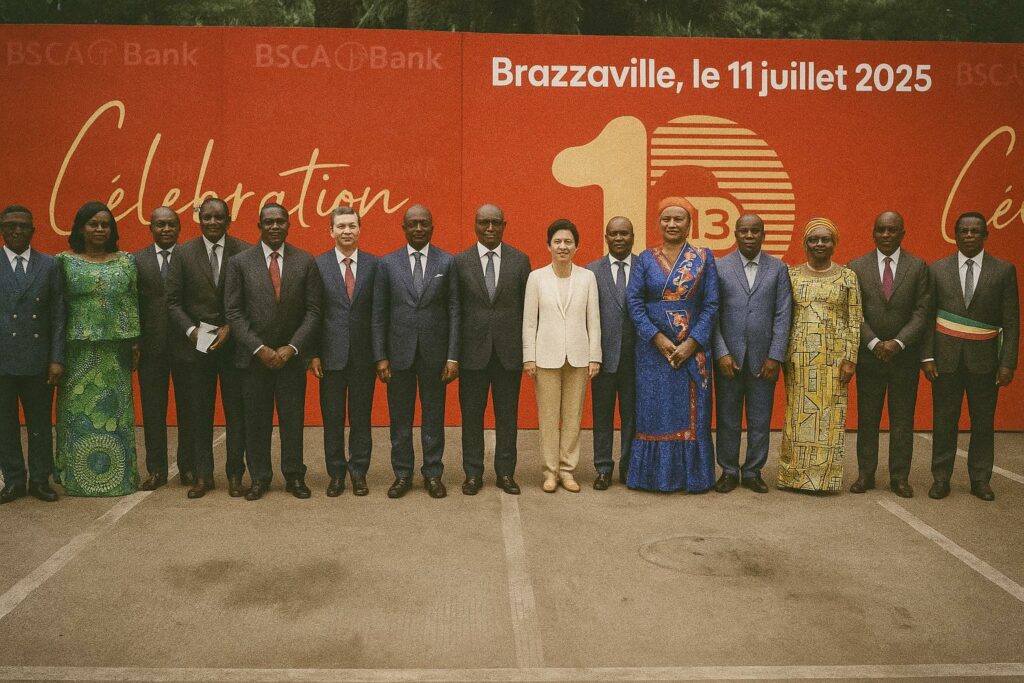Strategic Convergence in Brazzaville
The hushed corridors of the Ministry of Finance in Brazzaville became the scene of measured optimism as the eighth session of the Orientation and Oversight Committee of the Debt Reduction and Development Contract quietly unfolded on 10 July 2025. Co-chaired by Minister of Finance Christian Yoka and France’s Ambassador Claire Bodonyi, the meeting gathered senior Congolese ministers, technical line agencies and bilateral partners in a choreography that has become emblematic of Franco-Congolese development diplomacy. While the atmosphere was decidedly collegial, every interlocutor knew that the stakes were higher than the polite protocol suggested.
Financial Architecture of the C2D
Since its inception, the C2D mechanism has served as a sophisticated debt-swap instrument by which Paris converts Congolese external obligations into grant resources earmarked for locally driven projects (Ministère de l’Économie et des Finances, 2023). The current envelope of 229 million euros—translating into roughly 150.2 billion CFA francs at prevailing rates—has been strategically assigned to infrastructure, human-capital development and environmental sustainability. This approach dovetails with Brazzaville’s National Development Plan 2022-2026, aligning macro-fiscal relief with the government’s ambition to consolidate social gains and modernise public services.
Project Portfolio: Advances and Obstacles
Out of the thirteen financed operations, three have already crossed the finish line: the first phase of Brazzaville’s storm-water drainage network, the professionalisation of social-work training and the Lisungi social safety-net programme. Two initiatives linked to the national power utility were discontinued after feasibility parameters shifted. Six additional schemes—including the emblematic waterfront Corniche and the Agricultural Sector Revival Project—are slated for delivery between 2025 and 2027. As the committee dissected progress indicators, it became evident that completion timelines remain sensitive to exogenous shocks, particularly in commodity-dependent contexts.
Social Sector Priorities: From Lisungi to Telema
Minister Yoka used the session to underscore that social investment is not a subsidiary line item but the spine of economic resilience. The new Telema initiative, designed to channel seed funding to vulnerable households for income-generating ventures, captured much of the debate. Participants invoked the precedent of Lisungi, which currently supports around fifty thousand beneficiaries, as empirical evidence that cash-transfer programmes can reduce extreme poverty while stimulating local demand (World Bank Social Protection Review, 2024). Congolese officials therefore pressed for accelerated disbursement schedules to ensure continuity of social dividends.
Navigating Inflation and Fiscal Pressures
Yet the arithmetic of solidarity is increasingly constrained by the global surge in construction and logistics costs. Ambassador Bodonyi candidly warned that initial C2D allocations may no longer cover the full spectrum of activities agreed upon in 2019. The committee consequently called for granular cost-revision analyses and a prioritisation matrix that safeguards the most socially transformative projects. In parallel, technical teams were tasked with reinforcing monitoring units within the Finance and Land-Use Planning ministries, a move that echoes best-practice recommendations from the African Development Bank on institutional anchoring of project management (AfDB Governance Report, 2023).
Diplomatic Outlook and Next Steps
As the doors closed on the deliberations, both delegations projected a forward-looking narrative. France reiterated its readiness to convene an expanded partnership dialogue, potentially bringing multilateral financiers into the C2D tent to diversify risk and leverage additional capital. Brazzaville, for its part, reaffirmed that debt sustainability and social cohesion remain mutually reinforcing pillars of its policy stance under President Denis Sassou Nguesso. By the time the committee reconvenes next year, stakeholders expect a refined roadmap that aligns budgetary realism with developmental aspiration. If successfully executed, the C2D’s next chapter could serve as a regional template for transforming legacy debt into a catalyst for inclusive growth.

